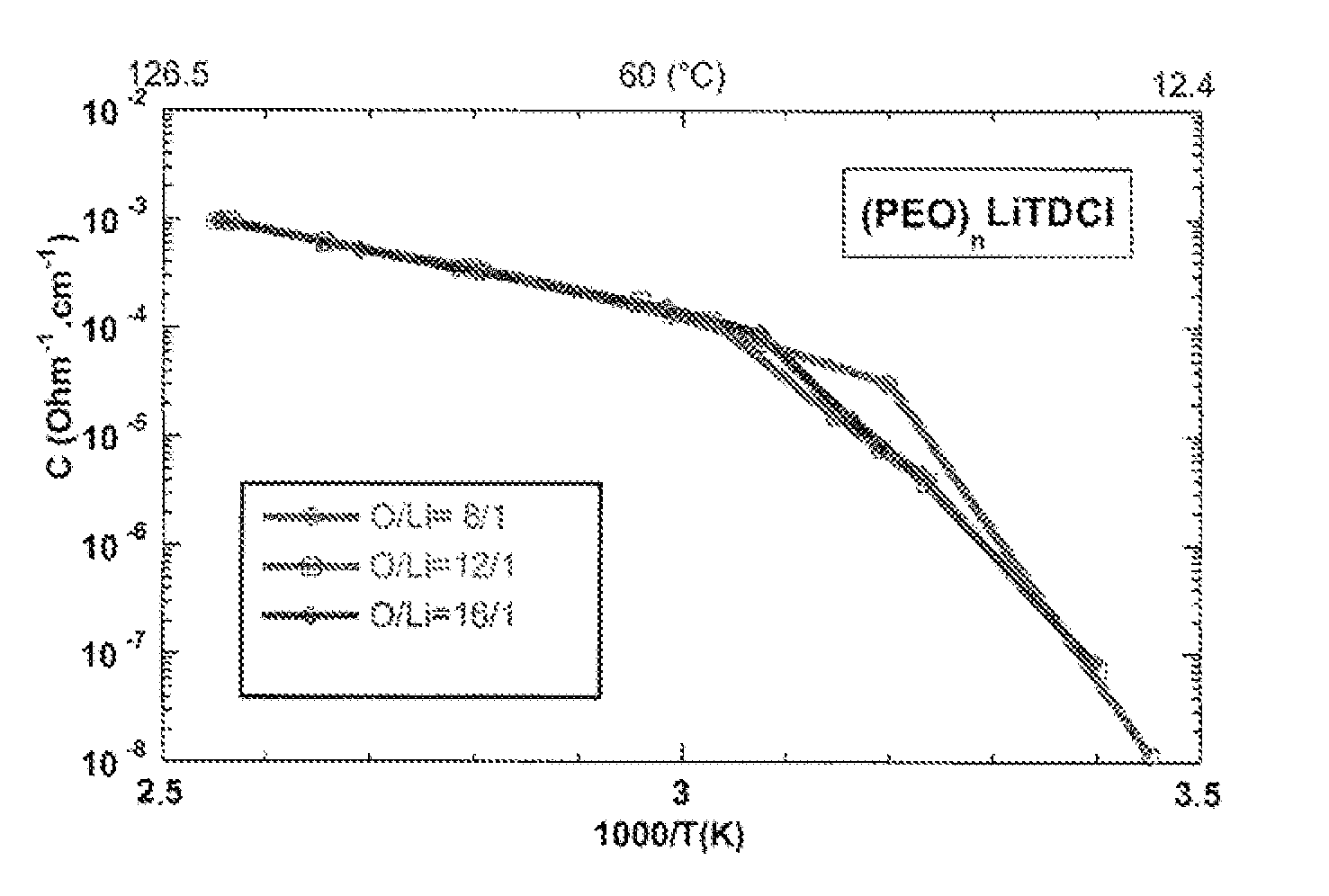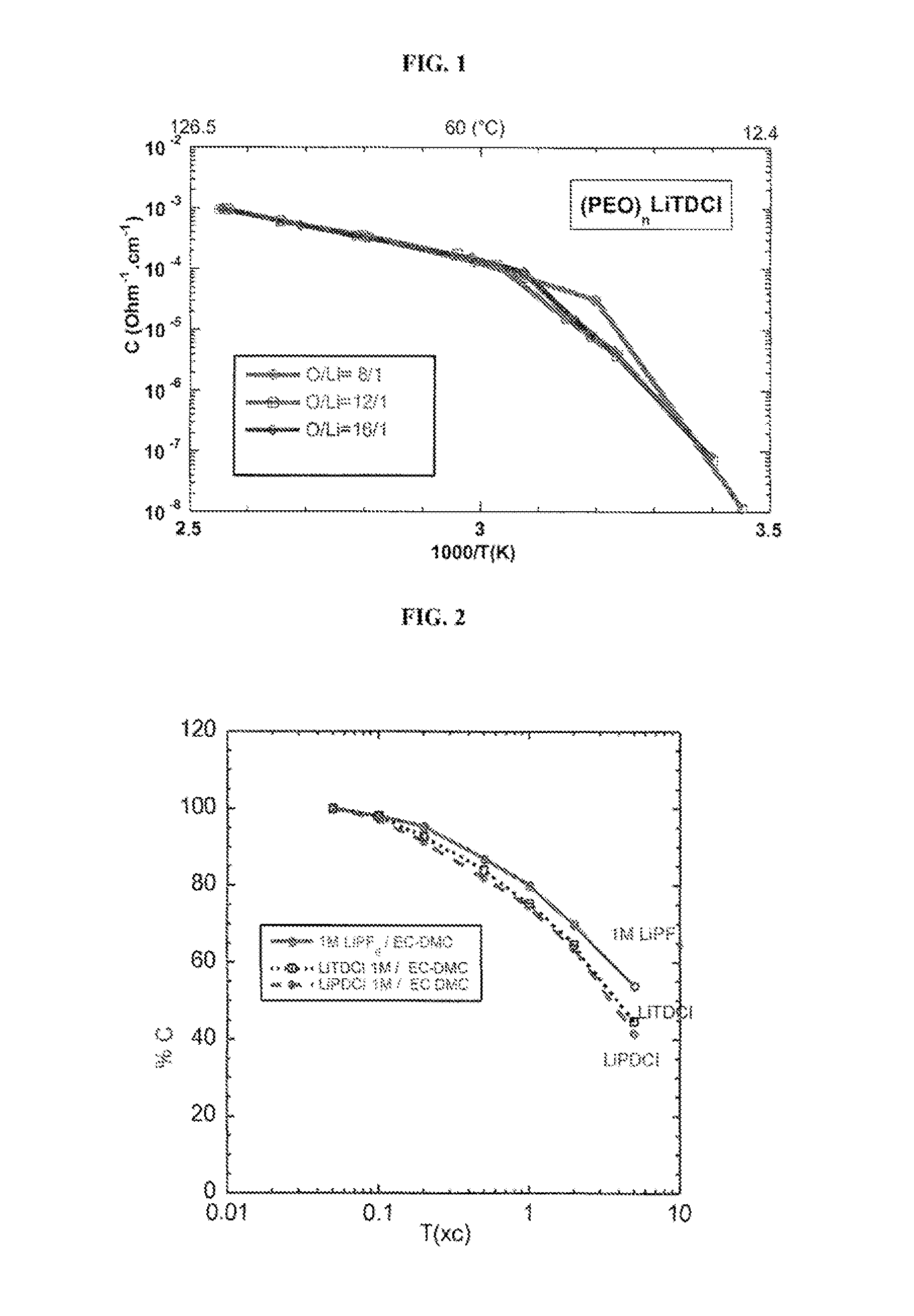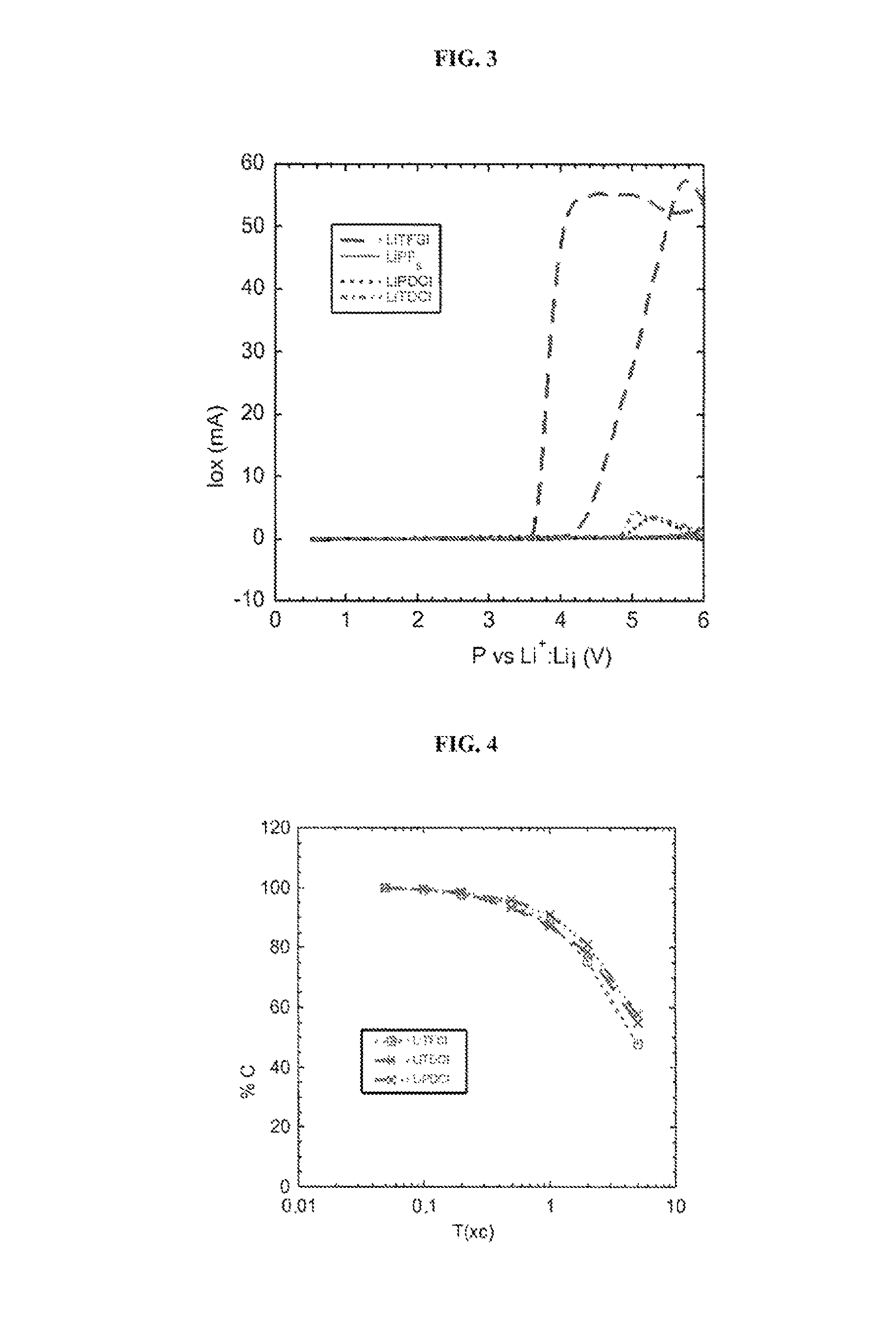Pentacyclic anion salt and use thereof as an electrolyte
a pentacyclic anion salt and electrolyte technology, applied in the field of ionic compounds, can solve the problems of limited conductivity of lithium salt, toxic and uncommon anions derived from as and sb, and release of hf,
- Summary
- Abstract
- Description
- Claims
- Application Information
AI Technical Summary
Benefits of technology
Problems solved by technology
Method used
Image
Examples
example 1
[0083]
[0084]2.42 g of trifluoroacetic anhydride were introduced into a reactor comprising a solution of 1.14 g of DAMN in 11 ml of dioxane. The mixture was maintained under argon and stirred under reflux until the reactants had completely disappeared. After removing the solvent and the trifluoroacetic acid under vacuum, the solid residue was dissolved in 50 ml of ether. The ether solution was extracted 4 times with a suspension comprising 1 g of lithium carbonate in 90 ml of water and then the aqueous solution of the lithium salt was washed with ether. After removing the water in a rotary evaporator, the dark residue was dried under vacuum at 100° C. The dark-colored solid was subsequently extracted with acetonitrile (4×10 ml) and the resulting solution was filtered. The acetonitrile was subsequently removed and the crude salt was purified by chromatography on alumina using an acetonitrile / benzene 2 / 1 mixture as eluent. After drying, 1.45 g (yield 71%) of lithium 2-trifluoromethyl-4...
example 2
[0091]
[0092]10.5 ml (53.8 mmol) of pentafluoropropionic anhydride were added to a solution of 4.84 g (44.8 mmol) of diaminomaleonitrile in 47 ml of dioxane. The mixture was heated at reflux under argon until the precipitate had disappeared [confirmed by thin layer chromatography (TLC), approximately 6 h]. The resulting mixture was placed under vacuum at 90° C. for 1 h and then dried on a high vacuum line at 120° C. for 1 h in order to remove the solvent and the acid. The solid residue was dissolved in 40 ml of ether and the resulting solution was extracted three times with a suspension of 3 g (40.5 mmol) of lithium carbonate in 100 ml of water. The aqueous salt solution was washed twice with 50 ml of ether. Subsequently, active charcoal, acting as decolorant, was added to the aqueous solution and the slurry was heated for 1 h. After removing the active charcoal by filtration through a filter paper, the solution was dried under vacuum at 80° C. for 2 h. Subsequently, the residue was ...
example 3
[0093]
[0094]10.8 g of DAMN and 22 g of chlorodifluoroacetic anhydride (ClF2CO)2O are added to 100 ml of diglyme and brought to reflux under a protective nitrogen atmosphere, and the reaction is continued for 48 hours. The reaction products are filtered and treated with 12 g of sodium carbonate, and the solution is evaporated. The solid residue is taken up in 80 ml of water and 25 g of sulfamic acid. The mixture of 2-chlorodifluoroethyl-4,5-dicyanoimidazole and of the reaction byproduct chlorodifluoroacetic acid is extracted with three portions of 50 ml of ether. The portions are combined and evaporated. The crude 2-chlorodifluoro-methyl-4,5-dicyanoimidazole is purified by sublimation under low vacuum at 90° C. in a Büchi oven.
[0095]The lithium salt is obtained by reacting 5 g of the acid form of the imidazole with a slight stoichiometric excess of lithium carbonate (1.1 g) in acetonitrile. The suspension is centrifuged and the lithium salt Li[CClF2C3N2(CN)2] is obtained in the form ...
PUM
| Property | Measurement | Unit |
|---|---|---|
| Length | aaaaa | aaaaa |
| Dissociation constant | aaaaa | aaaaa |
| Dissociation constant | aaaaa | aaaaa |
Abstract
Description
Claims
Application Information
 Login to View More
Login to View More - R&D
- Intellectual Property
- Life Sciences
- Materials
- Tech Scout
- Unparalleled Data Quality
- Higher Quality Content
- 60% Fewer Hallucinations
Browse by: Latest US Patents, China's latest patents, Technical Efficacy Thesaurus, Application Domain, Technology Topic, Popular Technical Reports.
© 2025 PatSnap. All rights reserved.Legal|Privacy policy|Modern Slavery Act Transparency Statement|Sitemap|About US| Contact US: help@patsnap.com



